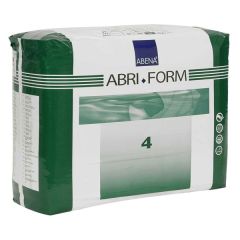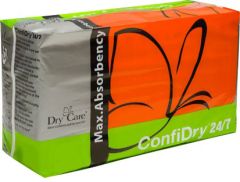July 19, 2018
Incontinence in the Elderly
Incontinence in the elderly is a fairly common problem. However, if you are someone who is experiencing incontinence or someone who is a caregiver for an elderly loved one it is crucial to understand that incontinence is not a normal part of aging. Incontinence can affect people of all ages but tends to affect the elderly more since many of the medical conditions that can bring on incontinence are more common as age. This means that seniors who are experiencing incontinence or their caregivers should never write off it off as simply getting old.
Because of the personal and intimate nature of this problem many elderly are ashamed and embarrassed when they begin experiencing incontinence. They will often feel isolated and unable to talk about it. When caregivers see that incontinence is happening it is important to talk to their elderly loved one about the possible causes and treatment. While this can be a difficult discussion when the topic is approached as a medical issue it can be more comfortable and easier for everyone involved. When the senior sees that the caregiver is their advocate they will be much more open to seeking help.
The first step for anyone who is experiencing incontinence symptoms is to seek a medical evaluation. This is crucial since most cases of incontinence are brought on by another medical issue. Ignoring the problem out of fear or embarrassment will not only let the incontinence get worse but the underlying medical problem, as well. The caregiver can help their elderly loved one by offering support and being a listening ear at doctor’s visits. The doctor will need extensive information but will most likely be able to diagnosis the cause of the incontinence and recommend the appropriate treatment.
After the diagnosis has been given and the appropriate treatment has been recommended the next step is to help the senior manage their incontinence. It is important to understand that treatment of incontinence takes time so it makes putting into place the appropriate management techniques that much more critical. The first step is to make sure that the senior has the right incontinence product to wear to prevent accidents and leakage. Today, there is a wide variety of products that can fit the needs of almost every senior who is dealing with incontinence. You can choose a product based on the senior’s gender, size, severity of incontinence, and lifestyle. This allows the senior to maintain the highest quality of life possible.
It is also important that caregivers help make the home of the senior as conducive as possible for managing incontinence. This can be done by making sure there is easy access to the bathroom. Motion sensor lights can help illuminate the path. Furniture and other potential obstacles should be moved out of the path of the bathroom. Finally, the bathroom should be considered for safety. Extra handrails and non slip mats can help increase the safety of the senior while they are in the bathroom.




